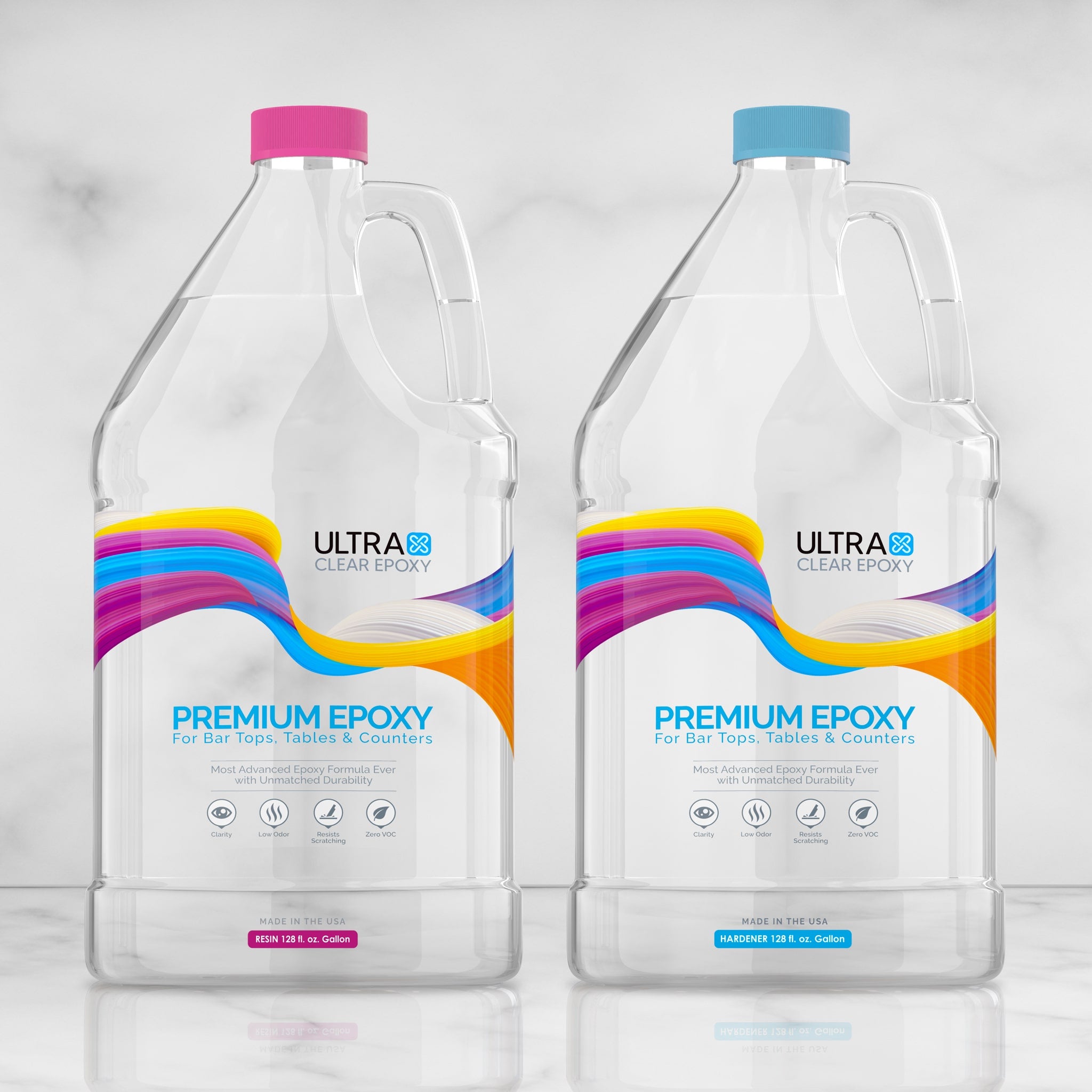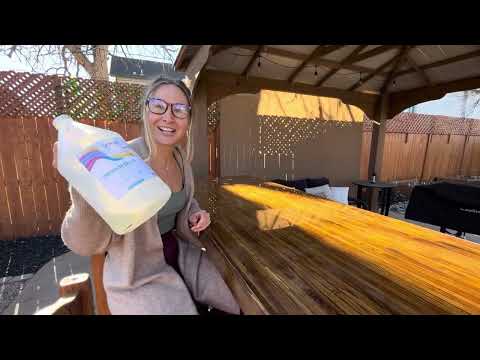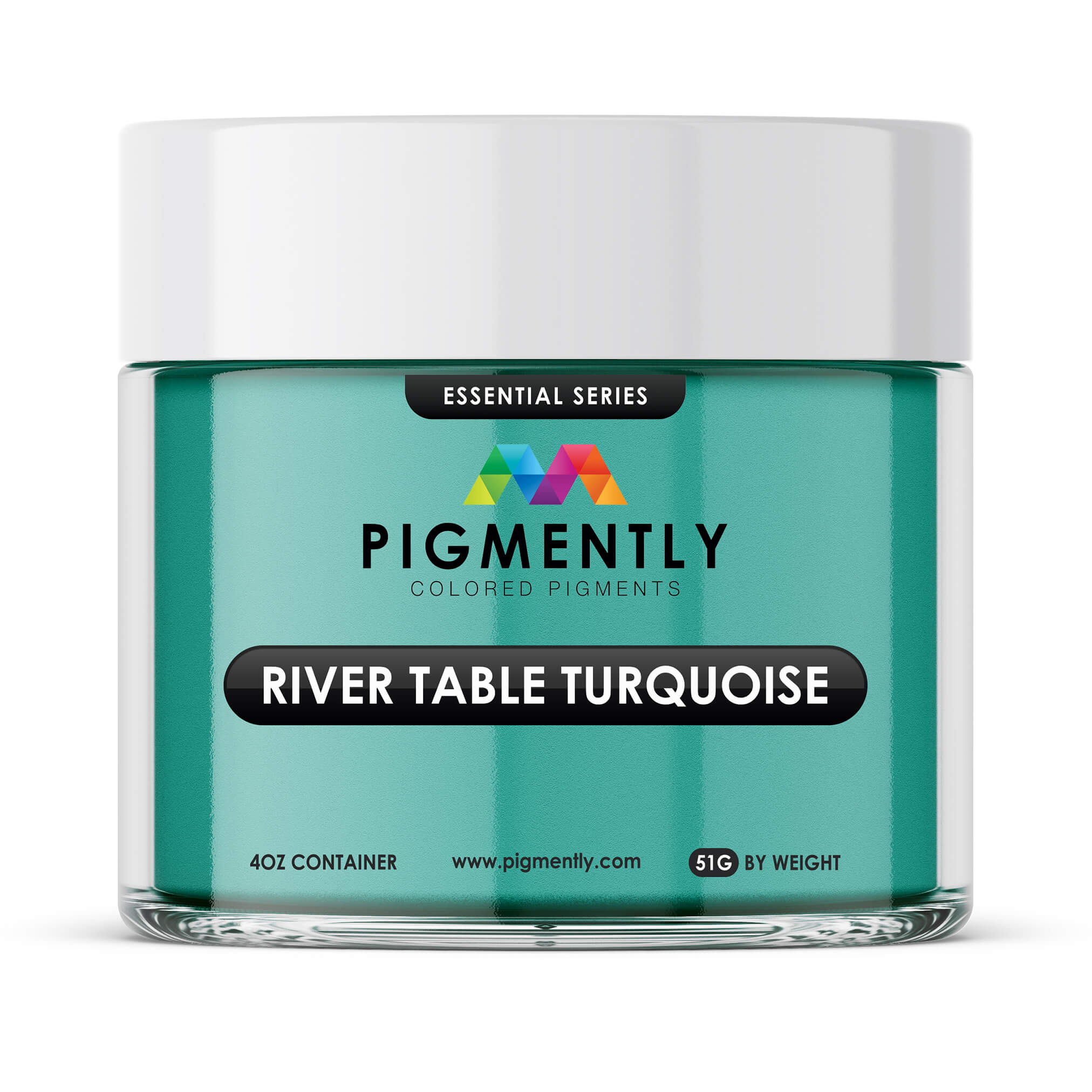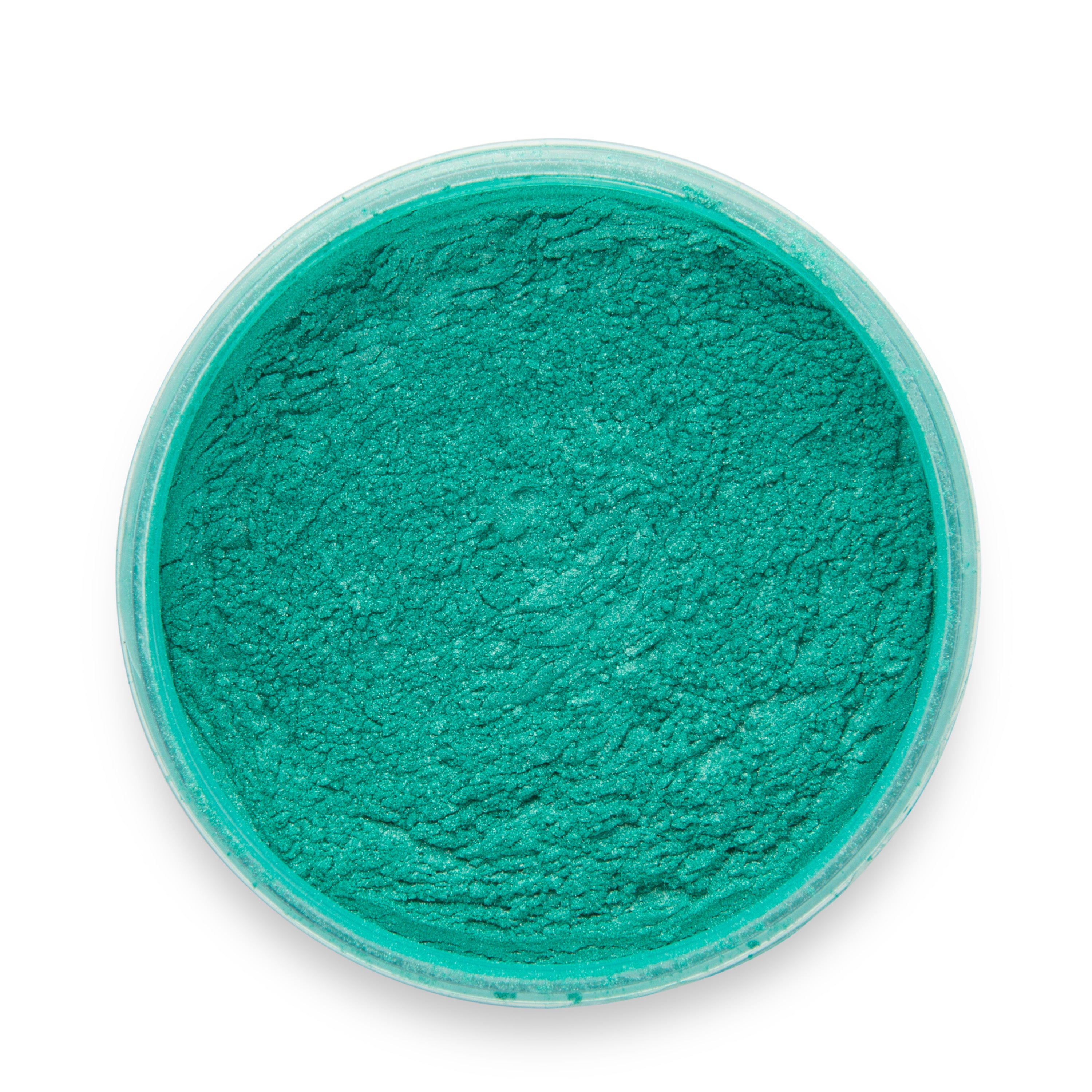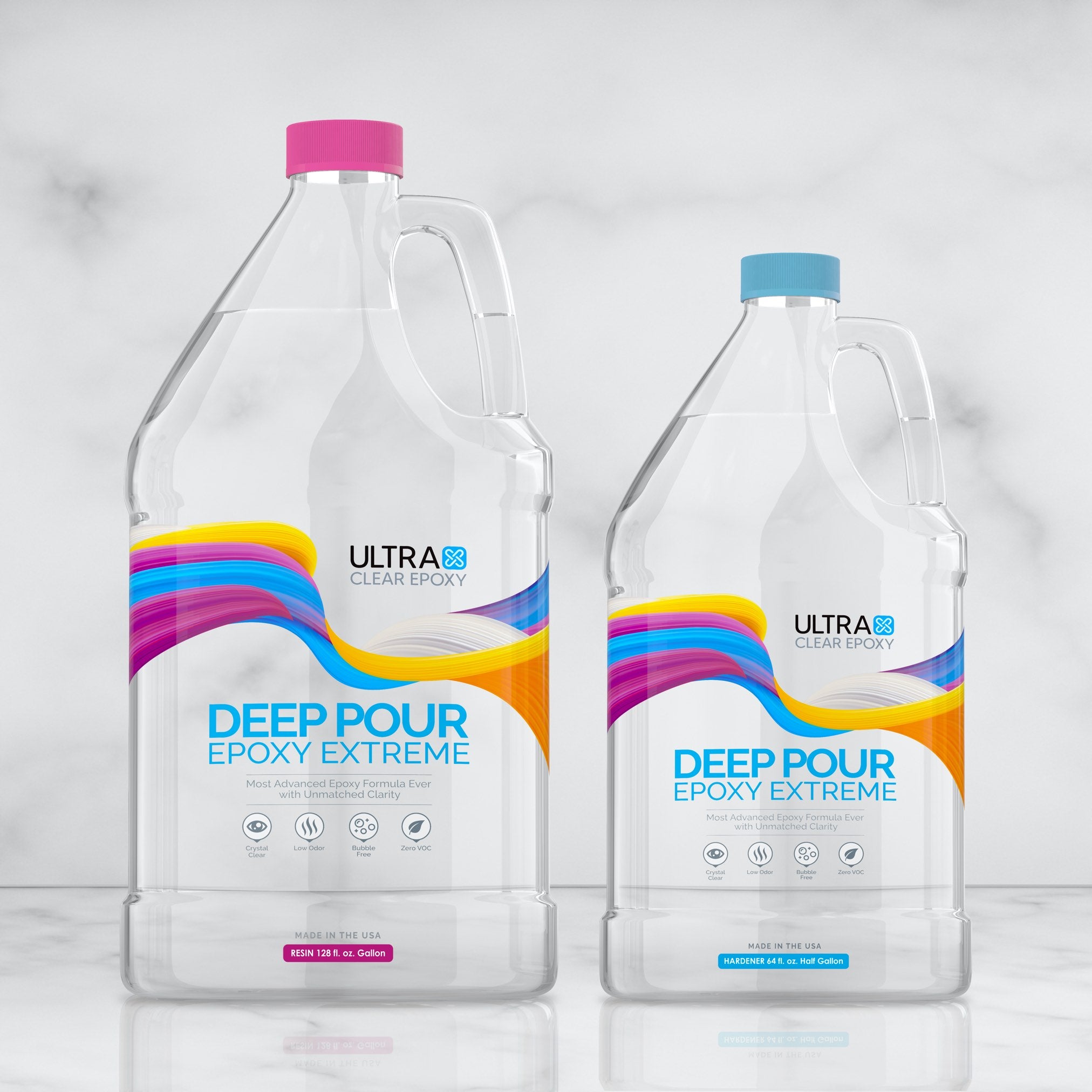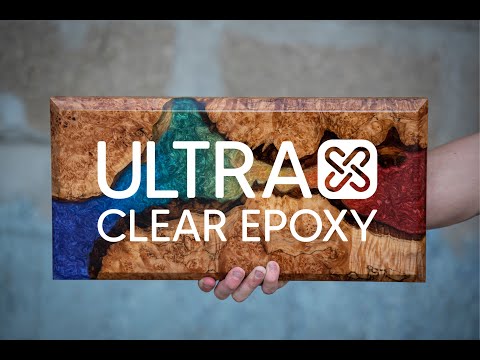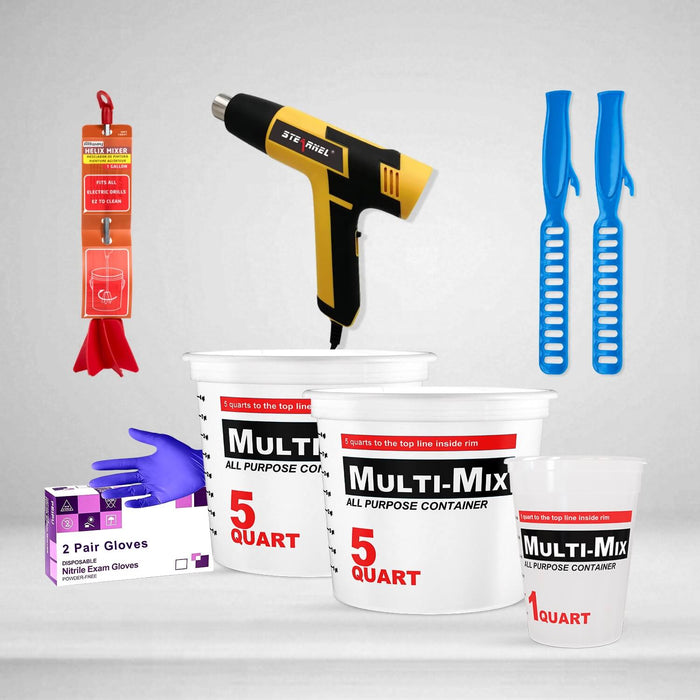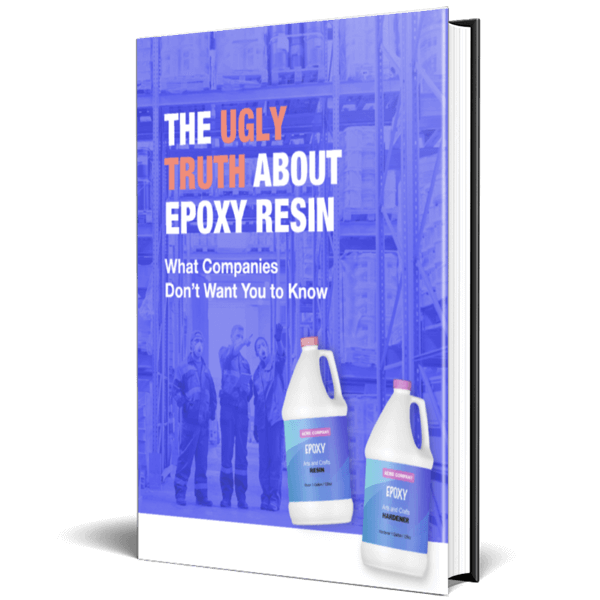Welcome to our Spotlight for epoxy table top projects!
When it comes to crafting epoxy furniture, epoxy table tops are some of our favorites. Though similar to epoxy countertops, they serve a wider variety of uses; table tops take on many different shapes, heights, and designs. In fact, they're one of the most versatile epoxy project types.
In this spotlight, we'll showcase tables crafted by UltraClear Epoxy users from around the country. You'll be able to see examples of the countless table concepts that can be brought to life with a coat of epoxy.

Why make an epoxy table top?
Before we get started, it makes sense to address a common question from people unfamiliar with epoxy. Why would someone want an epoxy table top over something more common like glass or polished wood?
The answer to that question lies in the variety of unique advantages that epoxy brings to the table. While tempered glass table tops, for instance, are scratch resistant and relatively sturdy, they don't offer nearly the amount of impact resistance provided by our fully cured Table Top Epoxy.
Polished wood, on the other hand, can suffer from moisture damage when left to linger, which usually happens through sheer accident via spills or leftover condensation from a cold beverage that doesn't get noticed in time. There are simple ways to prevent it, but they'll always require more vigilance than epoxy would, as epoxy can be cleaned up later without concern for moisture damage or warping.
Materials like wood and more ordinary plastics can be damaged very easily, sometimes with fingernails or small utensils. They're cheaper, but the quality is low.
Tables of similar quality, such as marble or granite, still need extra attention to be maintained properly, and they're also much heavier, which can be a concern for people who have a reason to move things around on occasion (such as for parties or friendly get-togethers).
Ultimately, when considering time, cost, and quality, epoxy is one of the best options available for a long term table with low maintenance. It can also be combined with other materials like wood and granite to protect them from their weaknesses while exhibiting their beauty, thanks to epoxy's transparency and glasslike finish.

Epoxy is resilient and can be applied to nearly every table material.
In addition to making a table top solely of epoxy, it's quite possible (and in fact more common) to create an epoxy table top by applying coats of it to various materials. Wood is the most common choice, due to its unique appearance and diverse selection. When epoxy is applied this way, the surface it adheres to is called the substrate.
Projects like this follow a straightforward process. First, a seal coat is applied to the substrate. This seals pores and tiny microscopic holes that contain air. After that's done, a flood coat will follow, followed by air bubble removal and a curing phase.
The key to a nice, clean finish is simply to follow the epoxy instructions. Our UltraClear Table Top Epoxy will arrive with a detailed set of instructions for every order. Additionally, you can find a digital version of our instructions via our support site.
Let's take a look at a few of the table top projects we've seen over the years.






Have questions? Want advice? Contact us!
If you have any questions about epoxy table tops, or if you'd like advice on planning an epoxy project, please reach out to us at UltraClear Epoxy.
Our epoxy experts are ready to assist you with your epoxy needs.
You can contact us via phone or email here. During business hours, you can also text chat directly online with one of our resin specialists by clicking the Help button at the bottom right of your screen.
UltraClear Epoxy—Trusted by over 1 Million+ Happy Customers


